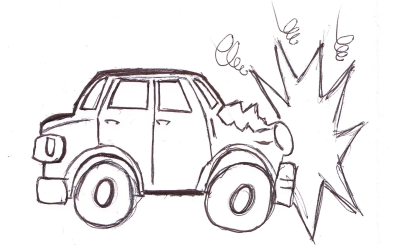Characteristics of motorcyclists involved in accidents between motorcycles and automobiles
Fuente
Este artículo es originalmente publicado en:
Este artículo es originalmente publicado en:
De:
Rev Assoc Med Bras (1992). 2015 Jan-Feb;61(1):61-4. doi: 10.1590/1806-9282.61.01.061. Epub 2015 Jan 1.
Todos los derechos reservados para:
This is an Open Access article distributed under the terms of the Creative Commons Attribution Non-Commercial License which permits unrestricted non-commercial use, distribution, and reproduction in any medium, provided the original work is properly cited.
Abstract
INTRODUCTION:
traffic accidents are one of the main causes of death and disability, with motorcyclists representing the great majority of both the victims and the perpetrators.
OBJECTIVE:
this work studied the characteristics of motorcyclists injured in accidents involving motorcycles and automobiles.
METHOD:
this study sought to interview 100 motorcyclists who had been injured in collisions between motorcycles and automobiles, and who were undergoing emergency hospital treatment in the region of Belo Horizonte, Brazil. The questionnaires included demographic information (age, gender, skin color, education level, profession) and questions about years of licensed driving practice, how often they would drive an automobile, how long they had had a motorcycle driver’s license, how often they would ride a motorcycle, the number of prior accidents involving a car, and the number of prior accidents not involving a car.
RESULTS:
of the 100 consecutive accidents studied, 91 occurred with men and 9 with women, aged between 16 and 79 (m = 29 ± 11) years. Regarding their reason for using a motorcycle, 83% reported using it for transport, 7% for work, and 10% for leisure. Most of these accident victims had secondary or higher education (47%). Of the motorcyclists who held a car driver’s license, 68.3% drove the vehicle daily or weekly and held the license for more than one year. Sixty-seven percent of the accident victims used a motorcycle daily and had a motorcycle driver’s license for at least one year.
CONCLUSION:
among the motorcyclists injured, most were men aged 20 years or older, with complete secondary education, and experienced in driving both motorcycles and cars, indicating that recklessness while driving the motorcycle is the main cause of traffic accidents.
Resumen
INTRODUCCIÓN:
Los accidentes de tránsito son una de las principales causas de muerte y discapacidad, siendo los motociclistas los que representan a la gran mayoría tanto de las víctimas como de los perpetradores.
OBJETIVO:
Este trabajo estudió las características de los motociclistas lesionados en accidentes con motocicletas y automóviles.
MÉTODO:
Este estudio buscó entrevistar a 100 motociclistas que habían sufrido heridas en choques entre motocicletas y automóviles, y que se encontraban bajo tratamiento hospitalario de emergencia en la región de Belo Horizonte, Brasil. Los cuestionarios incluyeron información demográfica (edad, sexo, color de la piel, nivel de educación, profesión) y preguntas sobre años de prácticas de conducción con licencia, la frecuencia con la que manejarían un automóvil, cuánto tiempo llevaban una licencia de conducir de motocicleta, Una motocicleta, el número de accidentes previos relacionados con un coche, y el número de accidentes anteriores que no implican un coche.
RESULTADOS:
De los 100 accidentes consecutivos estudiados, 91 ocurrieron con hombres y 9 con mujeres, entre 16 y 79 años (m = 29 ± 11) años. Con respecto a su razón para usar una motocicleta, el 83% informó usarla para el transporte, el 7% para el trabajo y el 10% para el ocio. La mayoría de estas víctimas de accidentes tenían educación secundaria o superior (47%). De los motociclistas que poseían una licencia de conducir de automóvil, el 68,3% conducía el vehículo diariamente o semanalmente y tenía la licencia por más de un año. El sesenta y siete por ciento de las víctimas del accidente usaban una motocicleta diariamente y tenían una licencia de conducir de motocicleta por al menos un año.
CONCLUSIÓN:
Entre los motociclistas lesionados, la mayoría eran hombres de 20 años o más, con educación secundaria completa y con experiencia en la conducción de motocicletas y automóviles, lo que indica que la imprudencia al conducir la motocicleta es la principal causa de accidentes de tráfico.PMID: 25909211 DOI:
[Indexed for MEDLINE]
Free full text


